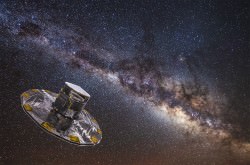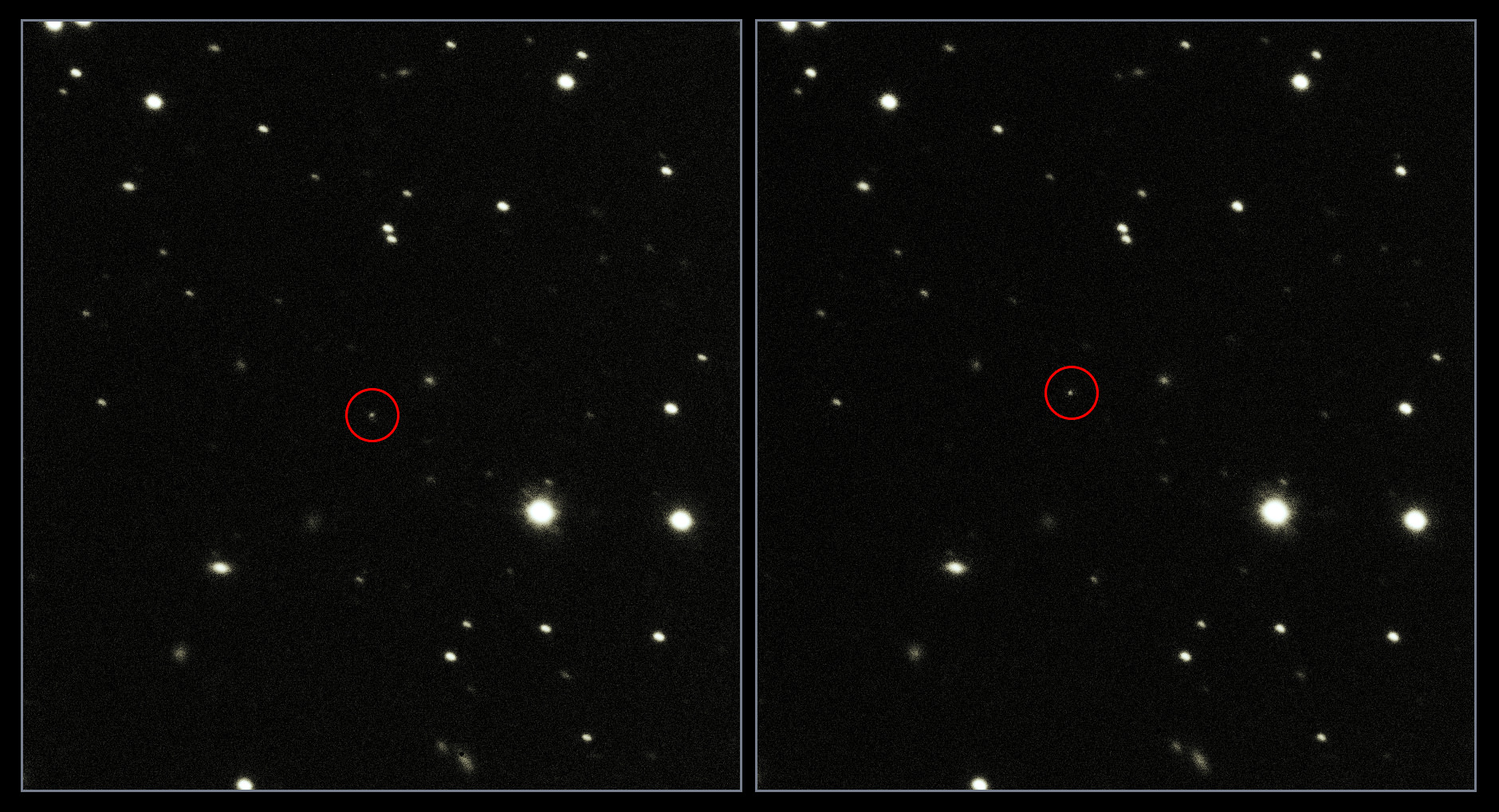Gaia, ESA’s long-anticipated mission to map the stars of our galaxy (as well as do a slew of other cool science things) is now tucked comfortably in its position in orbit around Earth-Moon L2, a gravitationally stable spot in space 1.5 million km (932,000 miles) away.
Once its mission begins in earnest, Gaia will watch about a billion stars an average of 70 times each over a five-year span… that’s 40 million observations every day. It will measure the position and key physical properties of each star, including its brightness, temperature and chemical composition, and help astronomers create the most detailed 3D map of the Milky Way ever.
But before Gaia can do this, its own position must be precisely determined. And so several of the world’s most high-powered telescopes are trained on Gaia, keeping track daily of exactly where it is up to an accuracy of 150 meters… which, with the ten-meter-wide spacecraft one and a half million kilometers away, isn’t too shabby.
Called GBOT, for Ground Based Orbit Tracking, the campaign to monitor Gaia’s position was first set up in 2008 — long before the mission launched. This allowed participating observatories to practice targeting on other existing spacecraft, like NASA’s WMAP and ESA’s Planck space telescopes.
The image above shows an image of Gaia (circled) as seen by the European Southern Observatory’s Very Large Telescope Survey Telescope (VST) atop Cerro Paranal in Chile, one of the supporting observatories in the GBOT campaign. The images were taken with the 2.6-meter Survey Telescope’s 268-megapixel OmegaCAM on Jan. 23, 6.5 minutes apart. With just the reflected sunlight off its circular sunshield, the distant spacecraft is about a million times fainter than what your eyes could see unaided.

It’s also one the closest objects ever imaged by the VST.
Currently Gaia is still undergoing calibration for its survey mission. Some problems have been encountered with stray sunlight reaching its detectors, and this may be due to the angle of the sunshield being a few degrees too high relative to the Sun. It could take a few weeks to implement an orientation correction; read more on the Gaia blog here.
Read more: Ghostly Cat’s Eye Nebula Shines In Space Telescope Calibration Image
Of the billion stars Gaia will observe, 99% have never had their distances accurately measured. Gaia will also observe 500,000 distant quasars, search for brown dwarfs and exoplanets, and will conduct experiments testing Einstein’s General Theory of Relativity. Find out more facts about the mission here.
Gaia launched on December 19, 2013, aboard a Soyuz VS06 from ESA’s spaceport in Kourou, French Guiana. Watch the launch here.
Source: ESA

